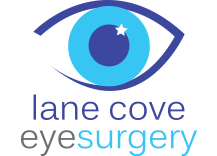The more common eye diseases and disorders in children are strabismus (turned or misaligned eyes) and refractive errors including hyperopia (long-sightedness) and myopia (short-sighted), both of which can be treated by Ophthalmologists.
Strabismus is generally picked up as the eyes will appear turned. Parents may bring the child in with this as the primary concern. However the “lazy eye” associated with the turn is generally treated first and then the misalignment is attended to with a day-stay surgery. “Lazy eye” or amblyopia is treated with patching therapy to improve the vision in the affected eye. The treatment takes place in the home and the better of the two eyes is patched so that the amblyopic eye has to “work” and the vision is strengthened. Patching therapy works best before 8 years of age so the younger a child is the more intervention and better outcome can be expected.
When vision is stable and if there is a persistent concern about the appearance of the eyes a muscle surgery can be undertaken in order to correct this. The surgery assists with the cosmetic appearance of the eyes it does not improve the vision. Strabismus surgery is day stay, even for smaller children, and is well tolerated. The muscles are realigned in one or both eyes depending on the type and severity of the turn. Children may need to take a week or so off school, a “bloodshot” eye may be present for a number of weeks and the eyes may be irritated as well.
Long-sightedness or hyperopia to some degree, is normal in children as we all start off longsighted and progress to “normal” vision as we develop. However, some children have a very high degree of long-sightedness that falls outside the average ranges and these children need to be assessed for glasses so the vision develops normally. Generally children who are longsighted do not complain of poor vision and parents may bring a child in with non-specific vision problems or perhaps reluctance to read. Children with hyperopia may take some time to adjust to their new glasses and persistence is required.
Less common diseases in childhood are juvenile glaucoma, cataracts and the associated complications of juvenile arthritis. Both cataract and glaucoma in children may be picked up by the appearance of the eyes or a family history. Inflammatory changes that are associated with juvenile arthritis are likely to be noted by a medical practitioner.
Essentially if there is any concern with the vision or the appearance of a child’s eyes this should be attended to as quickly as possible as this is a critical period for the development of good vision.
Is your child eligible for the Better Start initiative?
Children under six years old are eligible for early intervention funding if they have vision of less than or equal to 6/18 or equivalent field loss, in the better eye with correction.
For information about the Better Start for Children with Disability Initiative contact:
Department of Families, Housing, Community Services and Indigenous Affairs (FAHCSIA)
Enquiries and Applications: 1800 242 636
Website: http://www.fahcsia.gov.au/

